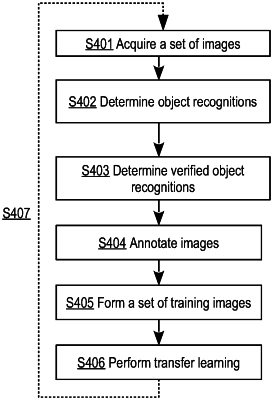| CPC G06V 20/52 (2022.01) [G06F 18/2148 (2023.01); G06N 3/04 (2013.01); G06N 3/08 (2013.01); G06T 7/20 (2013.01); G06T 7/70 (2017.01); G06V 10/255 (2022.01); G06V 10/454 (2022.01); G06V 10/82 (2022.01); G06T 2207/20081 (2013.01); G06T 2207/20084 (2013.01)] | 7 Claims |

|
1. A computer-implemented method of providing a scene-specific training for a pretrained object recognition neural network, the method comprising
acquiring, by an image sensor of a digital camera, a set of image frames of a scene to be monitored by the digital camera,
performing, by means of a first object recognition algorithm, a first image filtering step on the set of image frames to filter out a first subset of the set of image frames, wherein the first subset comprises image frames associated with object recognitions as determined by the first object recognition algorithm (102), and wherein each object recognition comprises location data and an object class of a recognized object in an associated image frame,
performing, by means of a second object recognition algorithm, a second image filtering step on the first subset of image frames to decrease the first subset of the set of image frames to a second subset of the set of image frames, wherein the second subset of the set of image frames comprises image frames associated with verified object detections as determined by the second object recognition algorithm by evaluating the object recognitions in the first subset of image frames to determine if movement of correlated object recognitions between image frames fulfills a predetermined movement condition that is specific for the object class of the object recognition being evaluated, and wherein an object recognition with a positive outcome in said evaluating forms a verified object recognition,
forming a training set of annotated images frames from the verified object recognitions and their associated image frames, and
providing scene-specific training of the pretrained object recognition neural network based on the training set of annotated image frames.
|